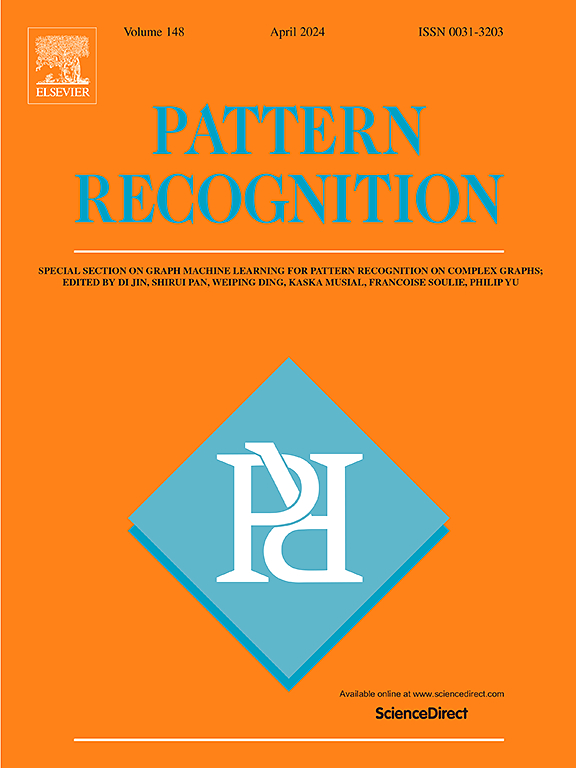Forget to Learn (F2L): Circumventing plasticity–stability trade-off in continuous unsupervised domain adaptation
IF 7.5
1区 计算机科学
Q1 COMPUTER SCIENCE, ARTIFICIAL INTELLIGENCE
引用次数: 0
Abstract
In continuous unsupervised domain adaptation (CUDA), deep learning models struggle with the stability-plasticity trade-off—where the model must forget old knowledge to acquire new one. This paper introduces the “Forget to Learn” (F2L), a novel framework that circumvents such a trade-off. In contrast to state-of-the-art methods that aim to balance the two conflicting objectives, stability and plasticity, F2L utilizes active forgetting and knowledge distillation to circumvent the conflict’s root causes. In F2L, dual-encoders are trained, where the first encoder – the ‘Specialist’ – is designed to actively forget, thereby boosting adaptability (i.e., plasticity) and generating high-accuracy pseudo labels on the new domains. Such pseudo labels are then used to transfer/accumulate the specialist knowledge to the second encoder—the ‘Generalist’ through conflict-free knowledge distillation. Empirical and ablation studies confirmed F2L’s superiority on different datasets and against different SOTAs. Furthermore, F2L minimizes the need for hyperparameter tuning, enhances computational and sample efficiency, and excels in problems with long domain sequences—key advantages for practical systems constrained by hardware limitations.
忘我学习(F2L):在连续无监督领域适应中避免可塑性-稳定性权衡
在连续无监督领域适应(CUDA)中,深度学习模型在稳定性与可塑性的权衡中挣扎--在这种权衡中,模型必须遗忘旧知识才能获得新知识。本文介绍了 "遗忘学习"(F2L),这是一种规避这种权衡的新型框架。与旨在平衡稳定性和可塑性这两个相互冲突的目标的最先进方法相比,F2L 利用主动遗忘和知识提炼来规避冲突的根源。在 F2L 中,对双编码器进行训练,其中第一个编码器--"专家"--旨在主动遗忘,从而提高适应性(即可塑性),并在新领域生成高精度的伪标签。然后,通过无冲突的知识提炼,利用这些伪标签将专业知识转移/积累到第二个编码器--"通才"。经验研究和消融研究证实,F2L 在不同数据集和不同 SOTAs 上都具有优势。此外,F2L 还最大限度地减少了对超参数调整的需求,提高了计算和采样效率,并在处理长域序列问题时表现出色--这些都是受硬件限制的实用系统的主要优势。
本文章由计算机程序翻译,如有差异,请以英文原文为准。
求助全文
约1分钟内获得全文
求助全文
来源期刊

Pattern Recognition
工程技术-工程:电子与电气
CiteScore
14.40
自引率
16.20%
发文量
683
审稿时长
5.6 months
期刊介绍:
The field of Pattern Recognition is both mature and rapidly evolving, playing a crucial role in various related fields such as computer vision, image processing, text analysis, and neural networks. It closely intersects with machine learning and is being applied in emerging areas like biometrics, bioinformatics, multimedia data analysis, and data science. The journal Pattern Recognition, established half a century ago during the early days of computer science, has since grown significantly in scope and influence.
 求助内容:
求助内容: 应助结果提醒方式:
应助结果提醒方式:


